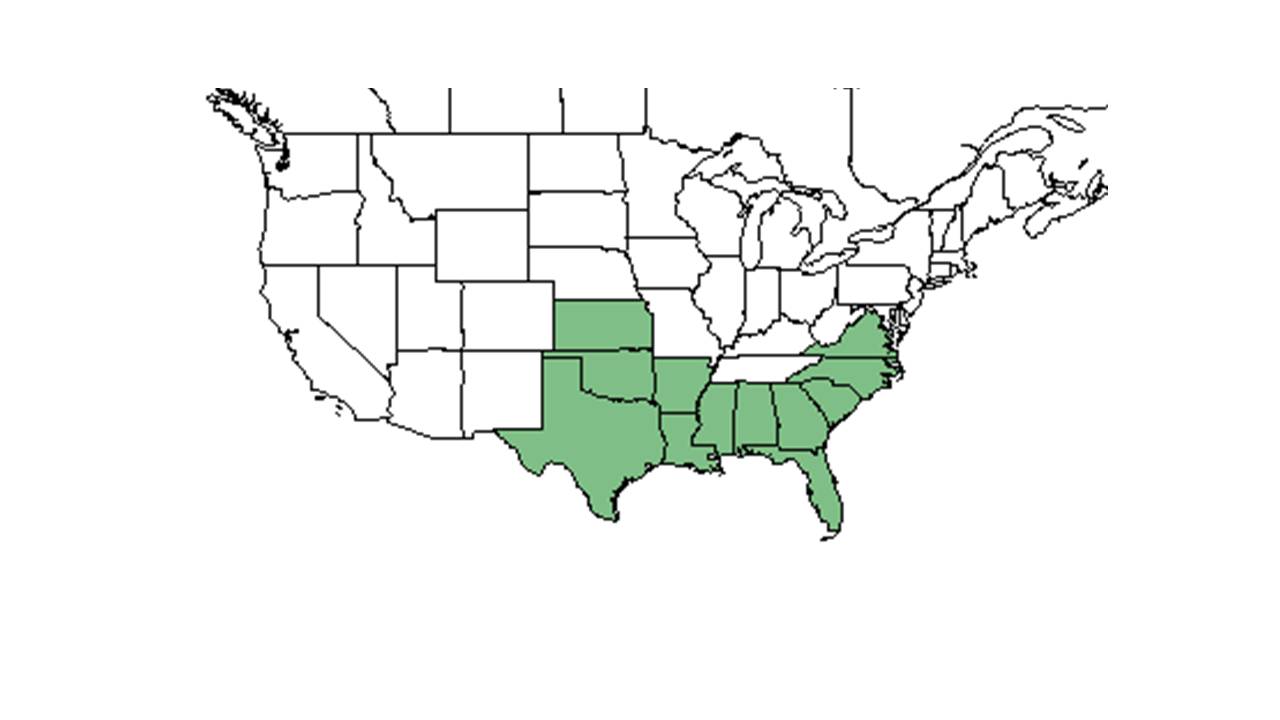Croptilon divaricatum
| Croptilon divaricatum | |
|---|---|

| |
| Scientific classification | |
| Kingdom: | Plantae |
| Division: | Magnoliophyta - Flowering plants |
| Class: | Magnoliopsida – Dicotyledons |
| Order: | Asterales |
| Family: | Asteraceae ⁄ Compositae |
| Genus: | Croptilon |
| Species: | C. divaricatum |
| Binomial name | |
| Croptilon divaricatum (Nutt.) Raf. | |

| |
| Natural range of Croptilon divaricatum from USDA NRCS Plants Database. | |
Contents
Description
Distribution
U.S. Gulf States. Sandy soil where pocket gophers occur which gives the area the characteristic disturbed appearance, “with bare and freshly turned patches of soil”[1]
Ecology
Habitat
Occurs in Sandhill Research and Education Center in South Carolina where soil series include Lakeland sands, loamy sands. Are mostly entisols (arenic and grosarenic quartzipsamments) with high permeability and low available water capacity. Previously was an agricultural area, so some of the land includes mosaic old-fields, pine stands, scrub oak dominated forests, and forested wetlands.[2] Found in open areas near the edges of mixed pine-hardwood forests and wetlands, at boundaries between or near 2 or more natural communities in Alachua County, Florida.[3]
Phenology
Seed dispersal
Seed bank and germination
Fire ecology
Pollination
Use by animals
Bees were captured on Croptilon divaricatum.[3]
Diseases and parasites
Conservation and Management
Cultivation and restoration
Photo Gallery
References and notes
- ↑ Shaal, B. A., Wesley J. Leverich (1982). "Survivorship Patterns in an Annual plant community." oecologia 54(2): 149-151.
- ↑ Jenkins, R. A., and Patrick D. McMillan (2009). "Vascular Flora of Sandhill Research and Education Center, Richland County, South Carolina." Castanea 74(2): 168-180.
- ↑ 3.0 3.1 Hall, H. G. a. J. S. A. (2010). "Surveys of bees (Hymenoptera: Apoidea: Anthophila) in natural areas of Alachua County in north-central Florida." The Florida Entomologist 93(4): 609-629.